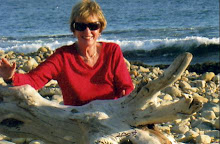Managing preschoolers is often perceived as an easy task, but on the contrary, it is hard and challenging. There are a lot of trials like unreasonable complaints, slow learners, hyperactive kids and the like. The school has to balance all of these things to maintain its good reputation. Every school aims to develop the student's skills and the way they relate with others. The school is one of the agents of socialization and is branded as the child's home. It is a venue for the child to express his feelings freely and to explore and discover new things. The teachers are there not just to facilitate but to facilitate creatively, because the child cannot cope easily without the creativity being one of the ingredients in teaching.
Thinking of ways to give the best learning experience to children involves a series of steps--- steps that are carefully planned, tested and developed. All schools have their own means of creating modules that can be instruments of a child's development. Let's take for instance, the math subject, which is said to be one of the more difficult subjects in school. It may be, but if it is taught creatively in preschool, the pupils, as they grow older, will definitely love studying Math. Of course, not all kids will turn into math geniuses but that's not the point. The keyword is fun, and there are lots of ways to have fun with math.
Here are some techniques in teaching math creatively:
1. Let the kids sing math songs. Songs are the best means for them to learn more easily. There are counting songs and addition songs. Be sure to let them sing those songs every day before the lesson starts.
2. Rhymes are also memory boosters. A teacher can teach classic counting rhymes or create her own.
3. Do the body math. Preschoolers are fascinated with their bodies. Count the child's eyes, and then add them together: one eye plus one eye equals two eyes. How many ears, legs, arms, elbows, knees or feet does he have?
4. Encourage four preschoolers to notice written numbers, street addresses, license plates or the numbers on the calendar. This not only offers experience reading numerals. It also reinforces the fact that numbers are a normal part of everyday life.
5. It is also effective to make use of blocks. Math is not just about numbers, it is also about area, size, space, dimension, shape and comparison.
6. Try "Match 'em up" games. Math requires the ability to distinguish similar and different attributes and to put things into categories. To build these things, preschoolers should be motivated to group items by certain attributes like clothes by color or plates by shape.
7. Show the child how to use the ruler. Let him measure his desk or notebook. Talk together about comparative length.
8. Experts still recommend dominoes to help kids learn to recognize whole amounts without having to count dot by dot. Pick a number between 1 and 20 and give the child a few chances to guess the number, offering "higher" or "lower" as clues.
Thinking of ways to give the best learning experience to children involves a series of steps--- steps that are carefully planned, tested and developed. All schools have their own means of creating modules that can be instruments of a child's development. Let's take for instance, the math subject, which is said to be one of the more difficult subjects in school. It may be, but if it is taught creatively in preschool, the pupils, as they grow older, will definitely love studying Math. Of course, not all kids will turn into math geniuses but that's not the point. The keyword is fun, and there are lots of ways to have fun with math.
Here are some techniques in teaching math creatively:
1. Let the kids sing math songs. Songs are the best means for them to learn more easily. There are counting songs and addition songs. Be sure to let them sing those songs every day before the lesson starts.
2. Rhymes are also memory boosters. A teacher can teach classic counting rhymes or create her own.
3. Do the body math. Preschoolers are fascinated with their bodies. Count the child's eyes, and then add them together: one eye plus one eye equals two eyes. How many ears, legs, arms, elbows, knees or feet does he have?
4. Encourage four preschoolers to notice written numbers, street addresses, license plates or the numbers on the calendar. This not only offers experience reading numerals. It also reinforces the fact that numbers are a normal part of everyday life.
5. It is also effective to make use of blocks. Math is not just about numbers, it is also about area, size, space, dimension, shape and comparison.
6. Try "Match 'em up" games. Math requires the ability to distinguish similar and different attributes and to put things into categories. To build these things, preschoolers should be motivated to group items by certain attributes like clothes by color or plates by shape.
7. Show the child how to use the ruler. Let him measure his desk or notebook. Talk together about comparative length.
8. Experts still recommend dominoes to help kids learn to recognize whole amounts without having to count dot by dot. Pick a number between 1 and 20 and give the child a few chances to guess the number, offering "higher" or "lower" as clues.
Maureen Amberg is an author, entrepreneur and children’s advocate for MEA Online Edge Inc., with emphasis on the self esteem and positive inner confidence of children; including teenagers. Caring for Kids is my current life focus. I strive to be kind, tranquil, serene, and compassionate. Hopefully, this translates into peaceful, calm and helpful.
Article Source: http://EzineArticles.com/?expert=Ara_Despabiladeras |




